It seems that more and more predatory animals are coming in contact with humans. A lot of this contact can be attributed to rabid animals, such as the bobcat that walked into a local bar right here in Arizona (sounds like a good joke!) and attacked a man, or the bobcat that was strangled to death by a man locked in mortal combat with it near Lake Pleasant, AZ. But beyond rabies encounters, with which I have had a few, there are predators popping up more often in subdivisions and downtown areas. We all know that predator numbers need to be kept in check, otherwise you'll end up with too little prey, leading to reduced small game numbers, or starving and desperate predators which can lead to attacks on humans. As stewards of the land we need to ensure that all animals have a healthy environment in which to thrive. We are also humans with a will to expand, and as we expand into new territory we find ourselves displacing animals. While prey species may run and find new homes, predators act more like the U.S. Marines - they adapt, they improvise, and they overcome.
Most times when I see a coyote dash across the road in my neighborhood I can think of nothing else than the thrill of tracking it through the streets and narrow roadways until I finally get it in my sights. One night I chased a bobcat through the checkerboard layout of a local subdivision, moving as fast as I could in the moonlight as the cat zigged and zagged with ease around cookie-cutter houses. It finally leaped a 4 foot wall, landing in someone's backyard and thereby ending the game. On another occasion I was visiting family in Colorado. My brother-in-law and I were playing with our kids in a city park when a large red fox trotted by us in the grass, nice as could be but certainly bound for some other destination; apparently these kind of sightings are normal around the area. While these types of wildlife interactions are harmless and fun to see, especially for kids, they can lead to problems if not kept in check with proper animal management.
What leads to these animal and human contacts within what we consider our established territory? First of all, predators don't see property lines or city boundaries - they see opportunity and survival. Easy prey species living in peace within the confines a neighborhood, be it quail, squirrels, or house cats, are a tempting target and certainly worth the risk. Garbage left out, food scraps not disposed of properly, and a generally neutral stance towards predators within our neighborhoods are some of the other reasons that a predator will move in. A few years ago here in Arizona, coyotes became so emboldened by the lack of response to their aggression that they finally set up shop near the ninth hole of a major golf resort. The coyotes began chasing golfers off and prancing around like they owned the place, yet local residents balked at the idea of a "removal service" for the coyotes, preferring for "nature to take it's course". When the coyotes nearly bit a golfer, finally the resort relented and hired a removal technician, who took care of the problem using air guns and live traps. A more extreme example is a red fox who was allowed to cruise a neighborhood, taking small pets and chickens at will, because the homeowners didn't want to harm the fox; that problem was never resolved and continues to this day. "He's just doing what he needs to do to survive" is a phrase often stated by those who don't approve of a predator's actions but don't want him removed. Sometimes it can be done with live traps but let's face it, that just temporarily solves the problem or moves it into someone else's backyard. There are ways to effectively control predator numbers in urban environments, including creating an environment that is not hospitable to predators by keeping pets at hand, garbage contained, and not feeding wildlife. In my opinion one of the best ways to keep them in check, and a method which I have used to great success, is to hunt them where we can, as close as we can, and as often as we can.
We hunt them in the name of conservation, fur harvesting, and just good fun, but still they manage to escape us. And what's more, they thrive where other animals would run! This should teach us something about the capability of these animals, and gives us the opportunity to learn more about them. Observing them in the wild, far from houses and concrete, is a great way to learn their behavior, but do not pass up the chance to watch a coyote mousing in a field in the middle of town, or to watch an educated fox watch cars as they pass before crossing the road, or to see a bobcat stalk the bushes at the edge of a waterway downtown as he looks for lost pets and stray ducks. Every time you see a predator you should be watching and learning, observing everything about how they move, act and react so that you can apply that knowledge to your hunting setup. They never stop learning, so why should you?
I have a genuine interest in predators - of course I love to hunt them but I also love to study them. Discovering what makes them tick, how much they can endure and best of all where they can endure it never ceases to amaze and amuse me. Here are just a few examples of what my favorite quarry is capable of - I find it hard to believe that most of us could adapt and survive so easily and readily in their environment!
First up: A badger goes postal - on video!
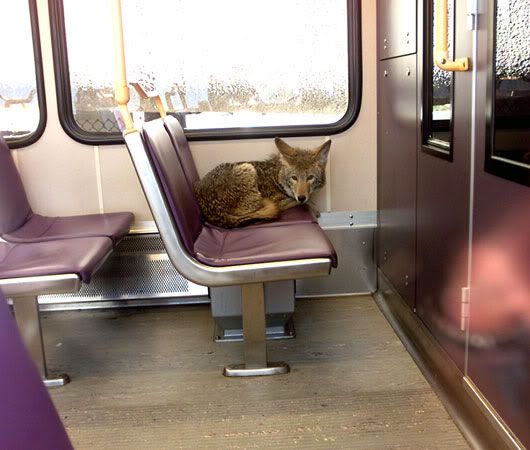
This wiley coyote caught the train in Portland after it was chased off the airport tarmac before being able to board a flight.
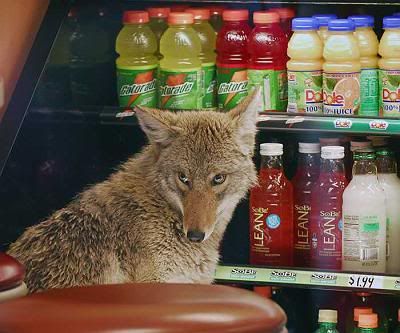
When it gets hot in Chicago the best place to be is the drink cooler at the local Quiznos sandwich shop.
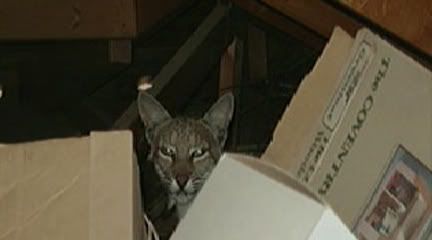
Having your kittens in a cave is for suckers - find a nice warm attic instead.

And if that attic happens to be on 'Wildcat Dr', all the better!
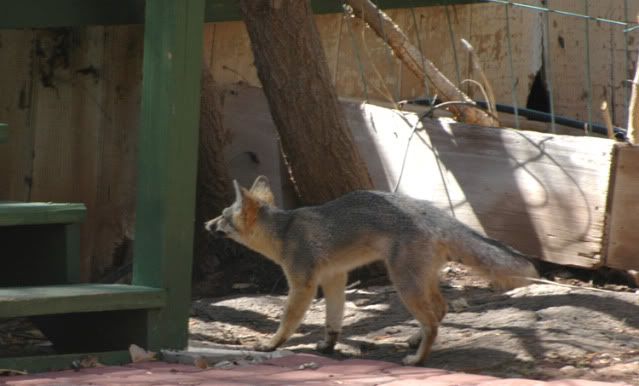
Running around in the brush chasing mice is hard work, but catching them underneath porches in a suburban backyard is much easier.
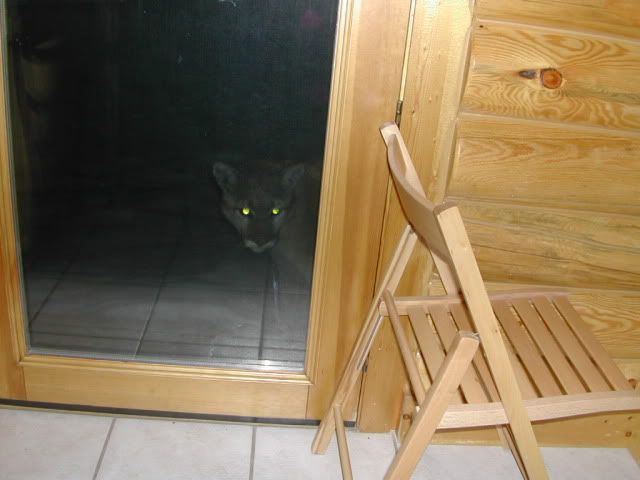
This mountain lion doing a horror movie 'peek-a-boo' through the back window is just one of the many reasons you should never leave your young kids unattended.

With all the wildlife, and especially predators, that we find ourselves living around on a daily basis, we have to do a little adapting ourselves. We need to pay attention to our surroundings and watch our pets, children, and where and how we dispose of our garbage. Be like Andy Samberg and team-up with wildlife in your local area and keep it wild - don't provide them with opportunities to become accustomed to living with humans. (WARNING: attempting to high-five a bobcat is not recommended, though it would be pretty cool.)

No comments:
Post a Comment